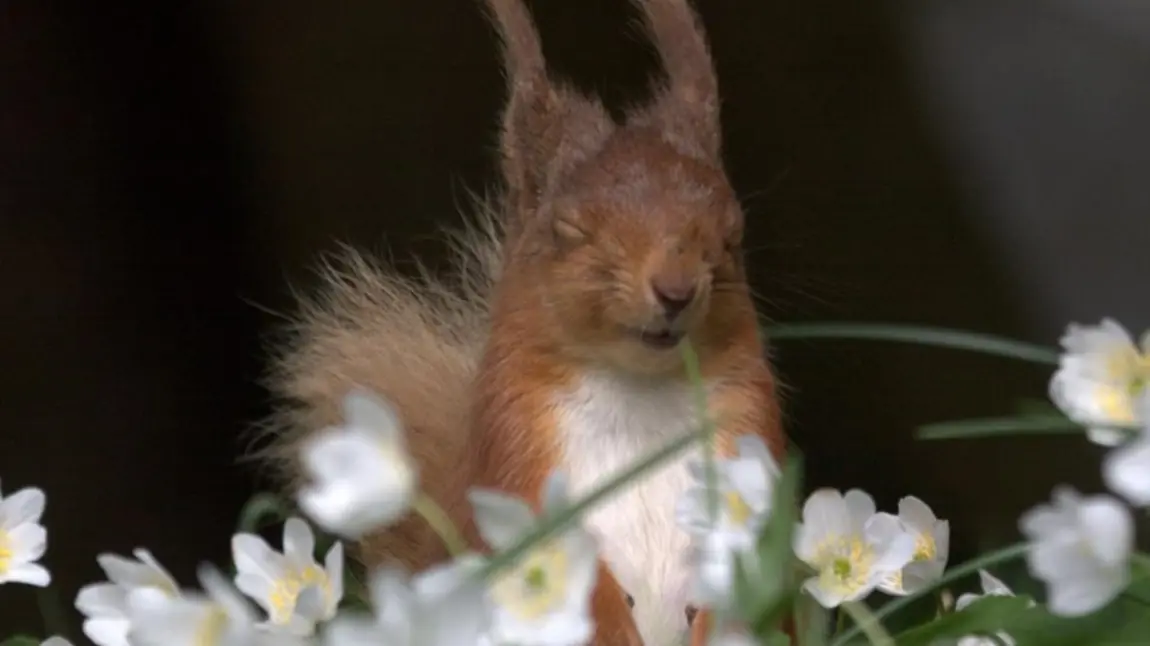£1.2m National Lottery grant to protect UK’s red squirrels

The much-loved, endangered native red squirrel and its habitat will be protected and promoted through Red Squirrels United, a new four year programme bringing together eight partners from across the UK.
Red Squirrels United will operate directly in England, Wales and Northern Ireland and work with the Saving Scotland’s Red Squirrels partnership on cross-border conservation action and skills-sharing to achieve the development of a truly UK-scale red squirrel conservation initiative for the first time.
The project will deliver key national conservation objectives with the aim of protecting red squirrels through communication, education and conservation activities. It is supported by Government nature conservation agencies and the 32 organisations within the UK squirrel accord group.
Community-based rapid response teams will be created involving 1,250 volunteers who will be trained to conserve key red squirrel populations threatened by their interaction with non-native grey squirrels. These volunteers will be supported by partner organisation staff, building the large networks of red squirrel champions essential for conservation success.
Partners will maintain grey squirrel-free habitat where it already exists, for example on the island of Anglesey and in Kielder Forest in northern England; extend current red squirrel protection zones in mid-Wales and Merseyside and implement a new whole country approach in Northern Ireland. All conservation work will be rigorously monitored contributing to robust scientific research and evaluation to be undertaken by academic partners.
Stephanie Hilborne OBE, Chief Executive of The Wildlife Trusts, said: "We're delighted that HLF is supporting this fantastic project. Our beautiful native red squirrels deserve our protection in every part of the UK where they can still thrive. This investment will allow us to unite hundreds of people championing this charismatic creature into one UK force for good. It will build on decades of hard work and passionate commitment. Thank you to players of the National Lottery for allowing this.”
Tom Tew, Trustee of the Heritage Lottery Fund, said: “The ongoing plight of the red squirrel is perhaps one of the most alarming and well-known conservation issues that this country has seen. It's great to see such strong co-operation between conservation organisations which now, thanks to National Lottery players, have a great opportunity to capitalise on all the local work and build a co-ordinated, national response to the threats faced by this endangered species.”
Through the Red Squirrels United project there will also be the opportunity for wider engagement with communities across the UK through workshops and events including mass participation squirrel monitoring.
The Red Squirrels United programme is led by The Wildlife Trusts in partnership with Newcastle University, Forest Research, Lancashire Wildlife Trust, Red Squirrels Trust Wales, Northumberland Wildlife Trust, Ulster Wildlife and The Wildlife Trusts of South & West Wales.
HLF has endorsed outline proposals and awarded £75,400 up front to help develop the project. The full grant amount will be considered at a later date, following a second-round application.
Notes to editors
Red squirrels (Sciurus vulgaris)
The plight of the red squirrel is now recognised in local, regional, national and international conservation policies – it is featured in the Bern Convention, it is a priority species in the UK Biodiversity Action Plan (BAP) and the Red Squirrel is afforded the highest level of protection under UK law, the Wildlife and Countryside Act. Red squirrel strongholds are Scotland, the Lake District and Northumberland with some isolated, remnant populations further south in both England and Wales including Anglesey, Formby in Lancashire, Brownsea Island in Dorset and the Isle of Wight.
Red squirrels are able to live in any type of woodland but in the UK they are now mostly confined to conifer forests where they have a competitive advantage over the larger greys. They do not hibernate. They bury nuts to help provide food in the winter to supplement the year round supply of conifer seeds in mixed broadleaf and coniferous woodland. Red squirrels build nests, called dreys, from sticks and moss placed high in the branches, where they produce two litters of three to four kittens a year. The drey is often the first evidence of the presence of red squirrels in a wood. Red squirrels can live for up to six years. Red squirrels are not always red. They can be brown, almost black, or even quite grey, and can become blonde due to bleaching by the summer sunlight. In winter, they have noticeable ear tufts. The Wildlife Trusts offer great places to see red squirrels.
Further information
The Wildlife Trusts Press Office: Anna Guthrie, Media & PR Manager Office: 01636 670 075, mobile: 07887 754 659, email: aguthrie@wildlifetrusts.org.